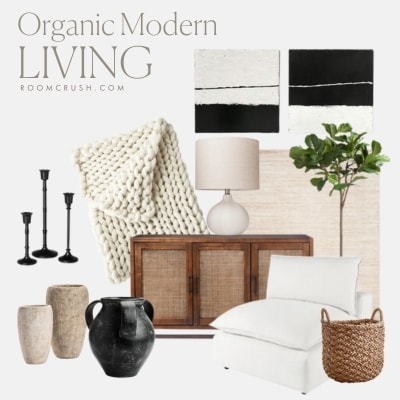10 Eco-Friendly Methods of Weed Control

Gardens and well-kept lawns matter; they add curb appeal, and value to your home. Also, they boost your mood and overall wellbeing. But their maintenance comes with a cost: weeds!
For a happy lawn or garden, weed control strategies are essential to realizing the land’s agricultural potential while also preserving the habitats and biodiversity on which we depend.
Most gardeners and homeowners tend to use chemical controls in weed-killing since they are less involving, thus, more affordable.
This site uses ads and affiliate content as an Amazon associate earning on qualifying purchases. Disclosure.
While chemical weed control is one of the effective methods, such methods have plagued with problems such as pollution of the environment, development of weed resistance, and above all depends on fossil fuel. The use of herbicides is also linked to harmful effects on people, and pets as well.
As a result, maintaining a balance is critical for healthy ecosystem.
The good news is that using chemical weedkillers at home is unnecessary. There are some weed-management and weed-eradication options that are both effective and healthy for all. Thus, ecological weed control solutions that are sustainable, and do not depend on harsh chemicals to destroy the weeds.
Instead of using chemical weed killers, try these eco-friendly weed control solutions:
10 Methods of Weed Control That Are Environmental-Friendly
1. Crop Rotation
Keep the weeds guessing by practicing crop rotation as they won’t have the time to get adapted to the soil and nutrient conditions per season.
Crop rotation can aid in weed control since different crops interact with weed species in different ways. Planting times, canopy growth rates, canopy heights, row spacings, fertility control, and harvest times differ by crop. This results in a diverse ecosystem that favors different weed species per year, preventing the domination of a few species.
If a farmer continues to plant continuous corn or corn-soybean, other weeds that are better suited to reduce tillage, such as annual grasses and invasive perennials, may become major issues.
Also, violent, large-seeded annual weeds, such as velvetleaf, morning glories, and prickly sida, thrive in a predictable pattern created by continuous corn or a simple corn-soybean rotation, in which fields are moldboard-plowed every spring before planting.
Since crop rotation enables different modes of action of weed control to be used, this helps to avoid the spread of resistant weeds. Different cultivation techniques can also help to prevent the growth of weeds that cause problems.
Ideally, weed diversity is increased by the variety of weed control techniques used for various crops, which decreases the occurrence of problem weeds that can accumulate over time.
You May Also Like: How to Prepare your Garden for Fall
2. Use A Stale Seedbed
Weed control using a stale seedbed is an environmentally safe alternative that can be used before any crop is planted to reduce the weed seed bank.
Ideally, a seedbed is prepared and the soil is ploughed. Since new weed seeds will be exposed and near the soil’s surface, they will almost certainly spread.
Killing weeds with stale seedbeds depends on shallow weed seeds germinating and then being killed before planting or transplanting.
Instead of sowing your seeds right away, wait a few days before planting them on these freshly prepared soils to allow weeds to germinate. Promote weed germination in areas where there isn’t enough moisture by irrigating or even using row covers.
Once the weeds have grown, which normally takes a couple of weeks, it’s time to destroy the weeds.
Weed flaming is a preferred weed control technique since the procedure does not disturb the soil, so no new weed seeds are brought close to the surface.
Gardening Tip…
To reduce the number of weed seeds brought to the surface to germinate after using the stale seedbed technique, be careful not to disturb the soil any more than it is during the seeding or transplanting process.
Thus, any cultivation done after should be kept extremely shallow.
You May Also Like: 10 Steps to Prepare your Garden for Winter
3. Flaming Weeds
Flame weeding is a weed control method that involves passing a carefully managed and guided flame over weeds to kill them. Propane gas burners are extremely dependable.
The cell structure of weed foliage is weakened by extreme heat, causing them to wilt or die prematurely. When weeds are still small, preferably as seedlings, this method should be used.
Though broad-leaved weeds can be easily destroyed by flaming, grass weeds can’t because their growing point is underground or has a defensive sheath around it. Actually, after a single flaming, they may even grow back.
Using many flaming passes over such weeds at a few days or weeks intervals, often at very slow speeds will maximize the amount of heat exposure. Thus, killing them.
Gardening Tip…
Before flaming, make sure the beds are fully prepared so they can be planted with crops. Simply keep the beds tidy by flaming them on a daily basis before planting time.
Flame weeding can be done after the crop has been directly planted as long as the seedlings have not yet emerged. This should be the final flaming.
During the process, ensure safety especially with tractor-mounted flaming units. It is best to seek expert advice before beginning the operation.
4. Using Weed Barriers
Weed barriers are used to prevent weed invasion while also allowing water, fertilizer, and oxygen to reach the plant.
Usually, a burlap-like fabric or cloth with a meshed texture, preferably a geotextile made of polypropylene or polyester, is used as a garden weed barrier. This method replaces the conventional method of laying down plastic as a garden weed barrier.
To use a weed barrier, first plant your seeds, then cover them with this biodegradable fabric and cut slits down to the ground where the plant is.
Another alternative is to clear the land where the fabric will be spread out and then cut slits in it where the plants will be planted.
To prevent weed barriers from degrading due to excessive sun exposure, they are covered with a 1 to 3-inch layer of mulch while in operation. This aids in the retention of moisture under the surface while also improving the aesthetics.
While this environmentally friendly weed control method is more efficient than chemical weed control, it does not completely eradicate the possibility of weed growth.
Therefore, it’s critical to get rid of all weeds before laying the barrier cloth. Also, be consistent with weed removal, especially in the surrounding areas.
5. Use Mulch
Mulch is a perfect weed suppressant as well as an effective way to maintain a constant level of moisture in the soil.
Weeds can be easily controlled by spreading a thick layer of mulch on bare soil, around plants, and in planters.
This is because mulch completely covers the soil, ensuring that no weed seeds will come into contact with it, and if they do, they are not exposed to light, thus, they cannot grow.
Mulch should be applied in two to three layers to smother weeds and keep moisture in the soil.
If you need to prevent weed growth, don’t make the mistake of not adding enough mulch—this will cause weed seeds to germinate by allowing too much light through.
Pull mulch back an inch from tree trunks or crop crowns when adding mulch to give your plants an inch of space. This will also help to avoid rot.
Organic mulches are common because they feed the soil and suppress weeds at the same time. Shredded cedar, fir, and cypress bark, chopped leaves, straw, and grass clippings for vegetable gardens, cocoa hulls, pine needles, and compost are among them.
6. Use Rocks
Can rocks really keep weeds at bay?
Weeds are discouraged from taking up residence in flowerbeds when rocks are used as mulch. Mulch made of small rocks, such as shale, pea-sized rocks, or golf-ball-sized rocks, is much preferable and can often be found in river beds.
Rock is a good option because:
- Rock does not degrade over time, so you will not need to replace it often and since you don’t have to buy it every year, you save money and time. Although rock mulching helps to avoid weeds and improves the appearance of your landscape, it can be more expensive than standard organic mulch.
- Water drains quickly through rock mulch, which is especially beneficial if your property has drainage issues. As a result, the plants are unlikely to rot.
- Rocks can withstand the stress of high traffic, particularly in areas where people like to take shortcuts.
- Your beds will look cleaner and more modern with a comfortable bed of rocks.
Consider putting underlayments between the rock and the soil to serve as a weed barrier, stopping weed seeds from getting into the soil.
As a result, a fabric weed barrier is an excellent option. Unlike plastic, it forms a great weed barrier under rocks while also allowing water to move through to feed the plants or bushes.
7. Soil Optimization
Optimizing the soil for crop growth to keep weed populations down may be a perfect ecological approach to weed control. This includes proper fertilization and mineral balancing of the soils.
Weeds are usually an indicator of a soil’s health.
Weeds are genetically programmed to compensate for a particular soil deficiency. As a result, increased weed growth in your field indicates an issue with the soil, which is deficient in the nutrient that the weed is intended to replace.
As a result, weed growth would be higher in problematic soils with poor conditions, as opposed to great soils with a strong crumb structure that promotes crop growth.
If you see more weeds germinating in your soils, it’s time to think about the soil’s nutrient balance to prevent weed growth.
Weeds with thick leaves, such as wild buckwheat, for example, grow to correct an imbalanced ratio of phosphorus(P), potassium(K), and calcium. These weeds thrive in soils with low phosphorus and high potassium levels.
You can then use this information to add the appropriate fertilizer to improve your soils. This will stifle the growth of a specific form of plant.
Before making any soil amendments, it’s a good idea to get a soil test to make sure you’re not using too little or too much of a mineral on other minerals. As a result, achieve optimal soil balance to provide your crops with exactly what they need while not choking out the weeds.
You May Also Like: The Best Indoor Plants to Grow for Beginners
8. Apply Pre-Emergents
Weed killers that are applied before the weeds appear in the garden or lawn are known as pre-emergence weed killers. This isn’t to say that the chemicals prevent germination; rather, they prevent the development of new root cells in young weed plants.
Corn gluten meal, a by-product of corn processing, is a pre-emergent herbicide that is used for both fertilizing and weed control.
It contains proteins that prevent certain small-seeded annual and perennial weeds, as well as most grassy weeds, from growing roots during seed germination. It also adds a good nitrogen boost to your lawn while also crushing weeds.
Crabgrass, dandelions, quack grass, curly dock, and pigweed are examples of weeds that can be killed using a pre-emergent.
You should add the corn gluten when it is unlikely to rain, as this will prevent it from being washed away by the rain. It is important to water the pre-emergent in with a soft spray and let the control settle in.
If the soil is disrupted directly after application, it can bring weed seeds to the surface, giving them access to sun and water. Avoid it!
You May Also Like: Should You Start A No-Till Garden? Here’s What You Need To Know
Gardening Tip…
Since corn gluten suppresses the germination of lawn grass seeds as well, it’s best to plant these seeds well away from the application points or wait four to eight weeks for the herbicidal effects of corn gluten to wear off.
Also, if you already have weeds in your lawn, for instance, crabgrass is an annual sun-loving weed that germinates in the spring and summer, and is extremely tough to get rid of because it can stay in the soil for decades and a plant can produce up to 150,000 seeds; you can still apply post-emergent weed control.
9. Plant Ground Cover Crops
Planting ground cover crops create a barrier for weed growth by vying for light, water, and nutrients, making it difficult for weeds to thrive.
They not only outcompete the weeds, but many of them also release chemicals into the soil that prevent weed seeds from germinating (a process known as allelopathy).
This is an excellent weed control solution, particularly during the winter months when the ground is dormant. Cover crops for the cooler months, such as ryegrass or clover, are excellent choices.
Pigweed, lambsquarter, purslane, and crabgrass can all be killed by winter rye, while sorghum can keep purple nutsedge, Bermudagrass, and several other small-seeded annuals at bay.
Cover crops such as peas, corn, and soybeans may also be used to smother weeds and replace nutrients such as nitrogen that can be leached from the soil by rains and irrigation. Herbs may also be squeezed in between the gaps.
Dense planting will shade the soil, preventing weed seeds from germinating.
10. Clean and Disinfect Gardening Tools and Containers
Weeds replicate and propagate in a variety of ways, and some have evolved unique adaptations to help with dispersal. Seeds, spores, hikers, and separated root and shoot fragments are among them.
Wind and water play an important role in the propagation of weeds over short distances. Unfortunately, humans are by far the worst offenders when it comes to spreading weeds, particularly on dirty tools, containers, and machinery.
Ensure that any garden equipment used in weed-infested areas is thoroughly washed before you store your garden tools or move to another area of the field.
Pin This…
Have you tried any of these eco-friendly weed control solutions?







